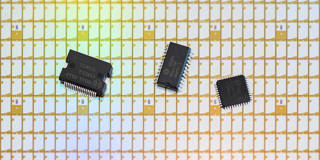In the early days of Silicon Valley, cutting-edge innovation was propelled by both the push of entrepreneurial ambition and the pull of big government. With the United States confronting new and unprecedented competitive pressures from abroad, it will need to revive this tradition, while avoiding unforced errors.
- Agathe Demarais, Backfire: How Sanctions Reshape the World Against U.S. Interests, Columbia University Press, 2022.
Jacob Helberg, The Wires of War: Technology and the Global Struggle for Power, Avid Reader Press, 2021.
Chris Miller, Chip War: The Fight for the World’s Most Critical Technology, Scribner, 2022.
Margaret O’Mara, The Code: Silicon Valley and the Remaking of America, Penguin Books, 2019.
CAMBRIDGE – “Potato chips, computer chips, what’s the difference?” a top economic adviser to US President George H.W. Bush supposedly asked in the early 1990s. “A hundred dollars of one or a hundred dollars of the other is still a hundred dollars.” At the time, Japanese firms were pushing their American competitors out of the market for memory chips, but free-market elites in Washington, DC, staunchly opposed any form of industrial policy to protect the domestic semiconductor industry. If foreign companies could produce chips at a lower price, they argued, American consumers would pocket the cost savings and direct their spending to other sectors.
Chipmakers in Silicon Valley were understandably dismayed. But they were hardly the only industry suffering from Japanese competition, and the federal government could not afford to protect them all (nor could it risk the political blowback of saving some but not others). In the years that followed, the structure and composition of the US economy evolved accordingly. The American share of global semiconductor manufacturing dropped from 37% in 1990 to 12% today. Asia now accounts for over 70% of semiconductor production, with the most advanced chips being produced exclusively in Taiwan and South Korea.
Yet not until the COVID-19 pandemic did the United States (and the rest of the world) seem to realize that computer chips really are quite different from potato chips. Because semiconductors are used in a vast range of goods – from computers, smartphones, and coffee makers to toys, automobiles, and weapons systems – the global chip shortages of 2021 cost the US economy $240 billion (around 1% of GDP). The global auto industry alone produced 7.7 million fewer cars than it would have, and the health-care, defense, space, and energy industries all suffered significant losses.

Jacob Helberg, The Wires of War: Technology and the Global Struggle for Power, Avid Reader Press, 2021.
Chris Miller, Chip War: The Fight for the World’s Most Critical Technology, Scribner, 2022.
Margaret O’Mara, The Code: Silicon Valley and the Remaking of America, Penguin Books, 2019.
CAMBRIDGE – “Potato chips, computer chips, what’s the difference?” a top economic adviser to US President George H.W. Bush supposedly asked in the early 1990s. “A hundred dollars of one or a hundred dollars of the other is still a hundred dollars.” At the time, Japanese firms were pushing their American competitors out of the market for memory chips, but free-market elites in Washington, DC, staunchly opposed any form of industrial policy to protect the domestic semiconductor industry. If foreign companies could produce chips at a lower price, they argued, American consumers would pocket the cost savings and direct their spending to other sectors.
Chipmakers in Silicon Valley were understandably dismayed. But they were hardly the only industry suffering from Japanese competition, and the federal government could not afford to protect them all (nor could it risk the political blowback of saving some but not others). In the years that followed, the structure and composition of the US economy evolved accordingly. The American share of global semiconductor manufacturing dropped from 37% in 1990 to 12% today. Asia now accounts for over 70% of semiconductor production, with the most advanced chips being produced exclusively in Taiwan and South Korea.
Yet not until the COVID-19 pandemic did the United States (and the rest of the world) seem to realize that computer chips really are quite different from potato chips. Because semiconductors are used in a vast range of goods – from computers, smartphones, and coffee makers to toys, automobiles, and weapons systems – the global chip shortages of 2021 cost the US economy $240 billion (around 1% of GDP). The global auto industry alone produced 7.7 million fewer cars than it would have, and the health-care, defense, space, and energy industries all suffered significant losses.